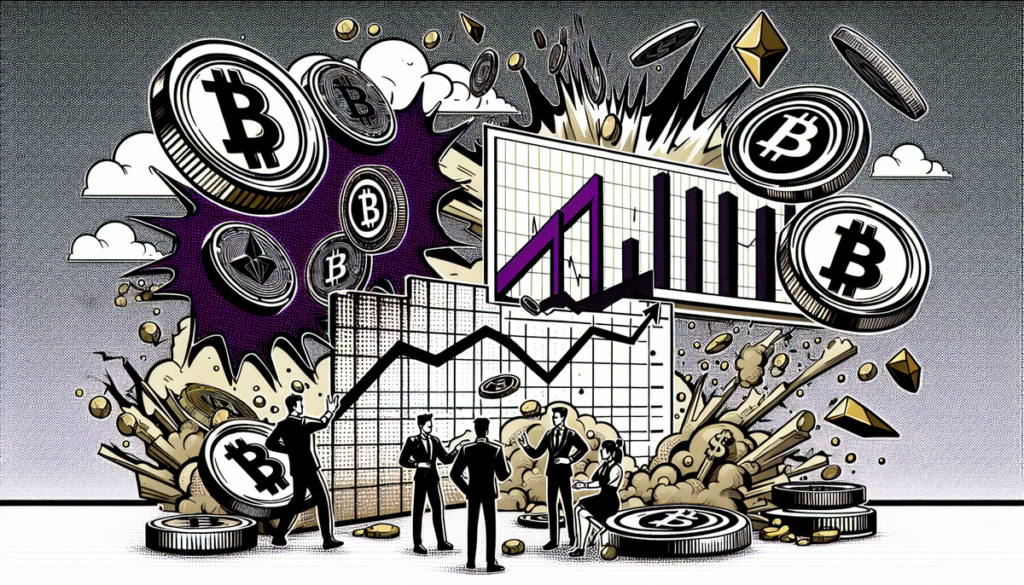Stablecoins Growth Set to Skyrocket in 2025 with Global Adoption

Stablecoins Poised for Remarkable Growth: Anticipating Global Adoption by 2025
The financial world is on the cusp of a major transformation, with stablecoins set to experience explosive growth heading into 2025. These digital assets, designed to maintain price stability, are gaining widespread traction as the global community becomes more receptive to cryptocurrencies. Stablecoins are carving out a crucial role in bridging traditional finance with decentralized systems, and they may soon revolutionize the way we manage and interact with money on a global scale.
In this post, we’ll explore the driving forces behind stablecoin adoption, the challenges they face, and how they could reshape financial systems worldwide.
Table of Contents:
- What Are Stablecoins?
- Why Are Stablecoins Gaining Popularity?
- Key Growth Drivers for Stablecoins by 2025
- Challenges Facing Stablecoins
- The Impact of Stablecoins on Traditional Finance
- What Does the Future Hold? A Glimpse into 2025 and Beyond
What Are Stablecoins?
Stablecoins are a type of cryptocurrency designed to maintain a stable value by being pegged to traditional assets like fiat currencies (e.g., USD), commodities (e.g., gold), or other cryptocurrencies. Unlike the highly volatile Bitcoin or Ethereum, stablecoins offer a safer alternative for those seeking to avoid drastic price fluctuations.
Popular stablecoins include Tether (USDT), USD Coin (USDC), and Dai (DAI). These coins have become vital tools for remittances, trading, and day-to-day transactions, particularly in regions where traditional banking systems are either inefficient or unavailable.
Why Are Stablecoins Gaining Popularity?
- Financial Inclusion: Around the world, billions of people are still unbanked or underbanked. Stablecoins offer a way to access financial services without relying on traditional banks, requiring only a smartphone and internet connection.
- Cost-Effective Cross-Border Transactions: Sending money internationally can be expensive and time-consuming. Stablecoins reduce these costs, offering fast and low-cost solutions for cross-border payments.
- Attractive in Emerging Markets: In countries grappling with hyperinflation or unstable currencies, stablecoins provide a means to preserve wealth and conduct transactions without fear of depreciation.
- Institutional Adoption: Financial institutions and corporations are increasingly integrating stablecoins into their systems. Companies like PayPal and various others are looking to explore the potential of stablecoins for improving payment systems and operational efficiency.
Key Growth Drivers for Stablecoins by 2025
Industry analysts predict that stablecoins will experience massive growth by 2025. Several factors are expected to drive this surge:
1. Clearer Regulatory Frameworks
As governments worldwide provide clearer guidelines on digital assets, stablecoins stand to benefit from regulatory clarity. A stable and regulated environment will encourage more institutional investment and long-term adoption.
2. Deeper Integration with Decentralized Finance (DeFi)
DeFi platforms already rely heavily on stablecoins for lending, borrowing, and liquidity. As the DeFi space continues to grow, stablecoins will play an even more central role in its ecosystem.
3. Support from Major Corporations
Tech giants and payment providers are actively pursuing stablecoin initiatives. For example, PayPal’s exploration of stablecoin integration highlights the growing interest in these assets within the corporate sector.
4. Advancements in Blockchain Technology
Improvements in blockchain scalability and transaction efficiency will address current bottlenecks, making stablecoins more accessible and practical for everyday transactions.
Challenges Facing Stablecoins
Despite their potential, stablecoins face several hurdles:
- Regulatory Challenges: There is still no global consensus on how to regulate stablecoins, with some governments expressing concerns over their impact on monetary policies and financial stability.
- Scalability Concerns: High transaction volumes could lead to congestion on blockchain networks. As stablecoin usage grows, addressing scalability will be crucial.
- Trust and Transparency Issues: Some stablecoins, like Tether, have faced scrutiny over the adequacy of their reserves. Increased transparency and regular audits will be essential to maintaining trust among users.
- Competition from Central Bank Digital Currencies (CBDCs): Governments around the world are developing their own digital currencies, which may compete with private stablecoins in areas like remittances and domestic payments.
The Impact of Stablecoins on Traditional Finance
Stablecoins are already having a significant impact on traditional financial systems and could continue to reshape the landscape:
- Challenging Payment Systems: Stablecoins offer a faster, cheaper alternative to traditional payment methods like wire transfers and credit card payments.
- Improving Trade Efficiency: By reducing the need for currency conversions in international trade, stablecoins help streamline global transactions.
- Influencing Fiat Currencies: As stablecoins gain popularity, questions about their potential to replace or coexist with traditional fiat currencies will continue to rise. While a complete replacement of fiat money is unlikely, stablecoins could challenge the current monetary systems.
What Does the Future Hold? A Glimpse into 2025 and Beyond
By 2025, stablecoins are expected to play a major role in global finance. Their adoption could open up new economic opportunities for individuals, businesses, and governments alike.
Key Projections for the Future:
- Widespread Adoption in E-Commerce: Stablecoins could become a standard payment method on global e-commerce platforms, simplifying transactions across borders.
- Government Use in Public Programs: Developing countries may leverage stablecoins for aid distribution, reducing corruption and inefficiency.
- Increased Role in Web3: Stablecoins will be integral to the development of Web3 technologies, fueling the growth of decentralized applications, metaverse economies, and tokenized assets.
As we move toward 2025, stablecoins are poised to revolutionize the way we conduct financial transactions, ushering in a new era of global economic connectivity. Whether for cross-border payments, decentralized finance, or daily transactions, stablecoins could significantly level the playing field and offer financial freedom to billions of people around the world.







Responses